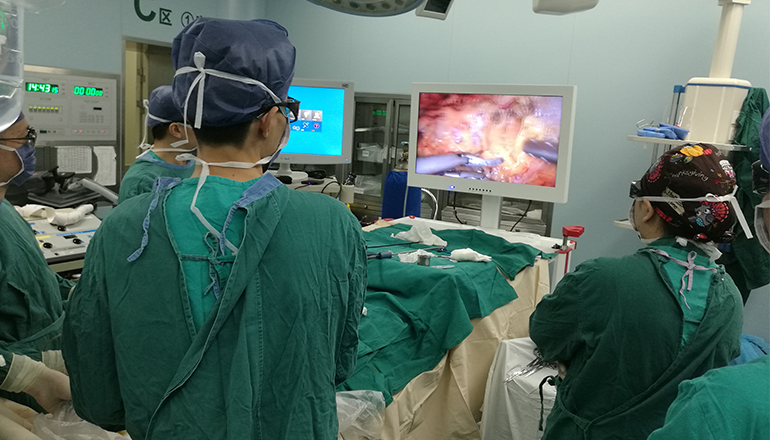- Shanghai, China
- [email protected]
- +86-21-58189111
Laparoscopic choledocholithiasis surgery is a minimally invasive surgical procedure used to remove gallstones from the common bile duct, which is the tube that carries bile from the liver and gallbladder to the small intestine. This procedure is typically performed using a laparoscope, which is a long, thin tube with a camera and surgical instruments attached, inserted through small incisions in the abdomen.
Here are the steps for carrying out laparoscopic choledocholithiasis surgery:
Preparation: The patient is placed under general anesthesia, and the surgeon makes several small incisions in the abdomen to insert the laparoscope and other surgical instruments.
Exploration of the bile duct: The surgeon inserts a cholangiogram catheter into the common bile duct and injects contrast dye to determine the location and size of any gallstones.
Creation of an incision in the common bile duct: The surgeon uses laparoscopic instruments to make a small incision in the common bile duct, which allows access to the gallstones.

Removal of gallstones: The surgeon uses specialized laparoscopic instruments, such as a basket or forceps, to remove the gallstones from the bile duct.
Closure of the incision: Once all the gallstones have been removed, the incision in the common bile duct is closed using sutures or surgical glue.
Drain placement: In some cases, a drain may be placed in the abdomen to help remove any fluid or bile that may have accumulated during the surgery.
Closure: Finally, the small incisions are closed using sutures or surgical glue.
Postoperative care: The patient will be monitored in the recovery room and then transferred to a hospital room. Pain medications are given as needed, and the patient is encouraged to walk around and resume normal activities as soon as possible.
Potential complications: As with any surgical procedure, there are potential risks and complications associated with laparoscopic choledocholithiasis surgery. These may include bleeding, infection, bile leak, or damage to surrounding organs. However, these complications are rare, and the benefits of laparoscopic surgery typically outweigh the risks.
Follow-up: The patient will typically be scheduled for a follow-up appointment with their surgeon to monitor their recovery and ensure that the bile duct is functioning properly. Follow-up imaging studies may be necessary to confirm that all gallstones have been removed and that there is no evidence of bile duct obstruction.
Advantages of laparoscopic choledocholithiasis surgery: Compared to traditional open surgery, laparoscopic choledocholithiasis surgery offers several advantages. These include smaller incisions, less pain and scarring, a shorter hospital stay, and a faster recovery time. In addition, laparoscopic surgery is associated with a lower risk of complications, such as bleeding and infection, and a lower risk of bile duct injury or other damage to surrounding organs.
Long-term outcomes: Most patients can expect to fully recover within a few weeks and resume their normal activities without restrictions. After a successful laparoscopic choledocholithiasis surgery, patients can expect to live a normal and healthy life, with a low risk of gallstone recurrence.
In summary, laparoscopic choledocholithiasis surgery is a safe and effective treatment option for patients with gallstones in the common bile duct. With proper patient selection and surgical technique, this procedure can provide excellent outcomes and a quick recovery time. If you are considering this procedure, talk to your doctor to determine if it may be a viable treatment option for you.
Leave a Comments